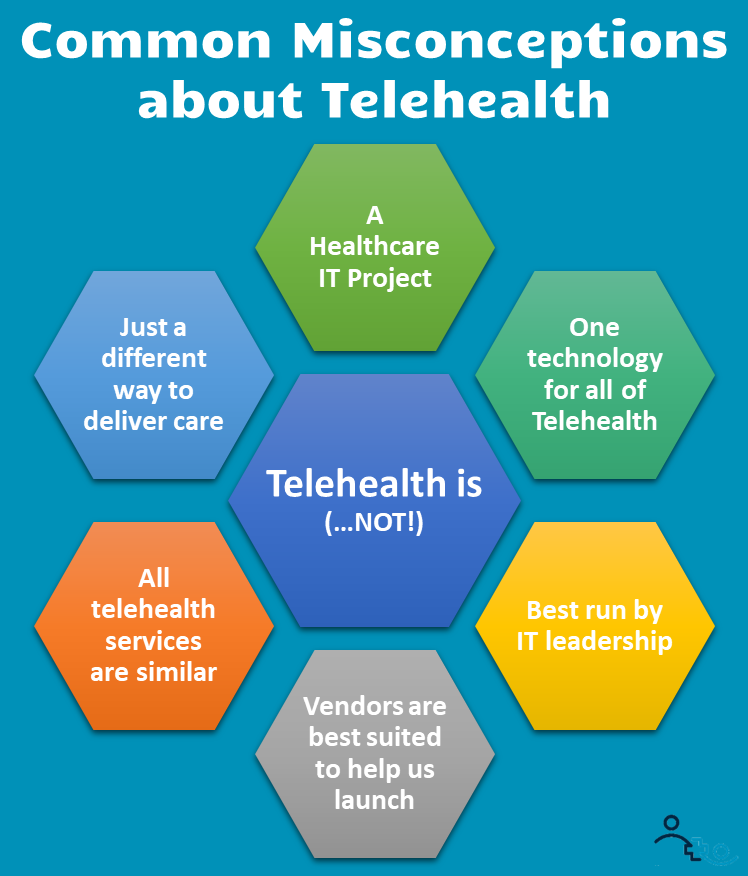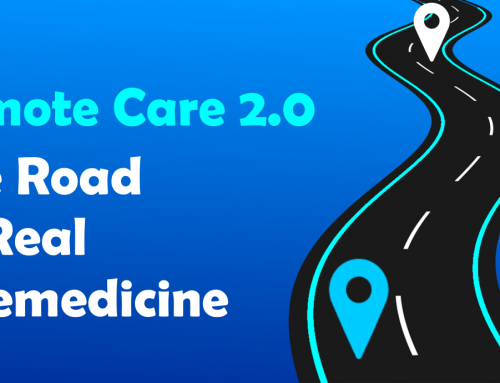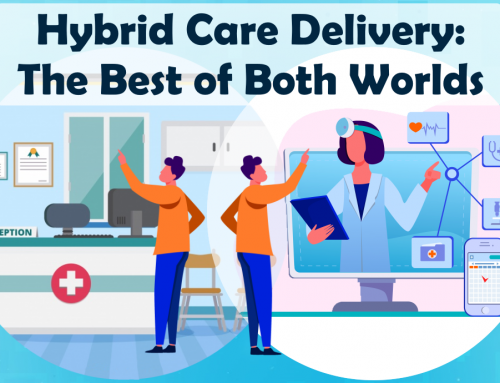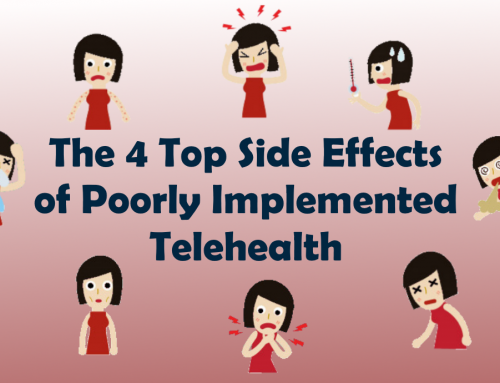Over the years that I’ve been working with health systems on telehealth service strategy, design and implementation I’ve come across a number of misconceptions. As telehealth these days seems to be really taking off now, these misconceptions may be some of the reasons why many telehealth implementations that I hear about have very disappointing results.
My intent with this series of articles is to raise awareness and bring clarification, so you can structure the launch of your telehealth services (even) more successfully. As readers of my article and past clients know, I’m very fond of Don Berwick’s often-used quote that “Every system is perfectly designed, to get the results it gets”. And in my definition, misconceptions are part of “the system”. They are simply, beliefs and perceptions that people have adopted, oftentimes without questioning them (and why would they?).
Here are the six most common misconceptions about telehealth, my description of the reality and a hint at some the tactics you can use to take advantage of your new understanding of the reality to launch telehealth services (even) more successfully.



- Telehealth is a Healthcare IT Acquisition and Deployment Project
- There is one technology solution for telehealth that everyone will use.
- Our IT staff is best suited to run our telehealth program.
- Telehealth Vendors will help us to properly set up our telemedicine services.
- Once we’ve established one telehealth service, we can quickly roll it out to others.
- Telehealth is just a different way to deliver care.
As you can see from the list, many of the misconceptions (in fact, the first four) focus on the “tele-” aspect of telehealth, the technology. As I’ve written before, telehealth is not about the technology. It’s about people (such as patients, provider, nurses, MAs, etc.) and processes (such as scheduling, synching, billing, etc.).
In this week’s article I’ll introduce the misconceptions and my description of the reality and over the next week’s I’ll take on each misconception and deliver evidence, examples and pragmatic solutions to launch telehealth successfully.
Misconception #1: Telehealth is a Healthcare IT Acquisition and Deployment Project
Reality: Telehealth is the design, development and launch of new clinical service offerings. (that includes the acquisition and deployment of technology)
Misconception #2: There is one technology solution for telehealth that everyone will use.
Reality: Telehealth encompasses interactive patient care (live audio/video), remote physiological monitoring, store & forward diagnosis, TeleEducation and all features accessible through the Patient Portal, such as reviewing lab results, clinical notes, immunization records or scheduling appointments.
Misconception #3: Our IT staff is best suited to run our telehealth program.
Reality: Technology contributes only 10% to the successful creation of a telehealth service. The other 90% are workflow and organi-zational change management
Misconception #4: Telehealth Vendors will help us to properly setup our telemedicine services.
Reality: Great vendors are involved in ensuring the proper configuration and training of users. They are not positioned to define work-flows, policies, billing, licensing, etc.
Reality: One swallow does not a summer make. If you’ve established one telehealth service, you’ve established one telehealth service. Every new service requires a new launch.
Misconception #6: Telehealth is just a different way to deliver care.
Reality: Telehealth is becoming the way to deliver care. Leading organizations use it strategically to drive their strategic objectives.
What misconceptions have you come across or that you may have held in the past? Send me a quick note!








To receive articles like these in your Inbox every week, you can subscribe to Christian’s Telehealth Tuesday Newsletter.
Christian Milaster and his team optimize Telehealth Services for health systems and physician practices. Christian is the Founder and President of Ingenium Digital Health Advisors where he and his expert consortium partner with healthcare leaders to enable the delivery of extraordinary care.
Contact Christian by phone or text at 657-464-3648, via email, or video chat.







Leave A Comment